Knife steel can be confusing, so let's break it down.
If you google knife steel, you will be going into a deep dark hole of 'opinions'. Some are accurate, some not so much.
For those that don't want to read further and know your stuff - our core steel is VG10, Rockwell 60-62.
It's awesome.
There is no "perfect" knife steel. Knife makers will argue to the ends of the earth about which steel is better and there will always be a difference in opinion. As a qualified Chef for nearly 20 years I have picked my favourite, and this is what I use in all my knives.
So, why do I like this steel? First off, we need to talk about the 'Rockwell Hardness Rating' which is a test that pushes a pin into a piece of steel. The harder the pin needs to be pushed to make an indent, the harder the steel is. The Rockwell rating on my knives is between 60-62. In comparison, here is the Rockwell Rating on other well-known brands:
Global: 56-58
Wusthof: 58
Victorinox: 56
Henkles: 55
What this means for you is that you are getting a blade that is durable. The harder the steel, the longer the knife will stay sharp. The steel is easy to sharpen and has very good rust resistance.
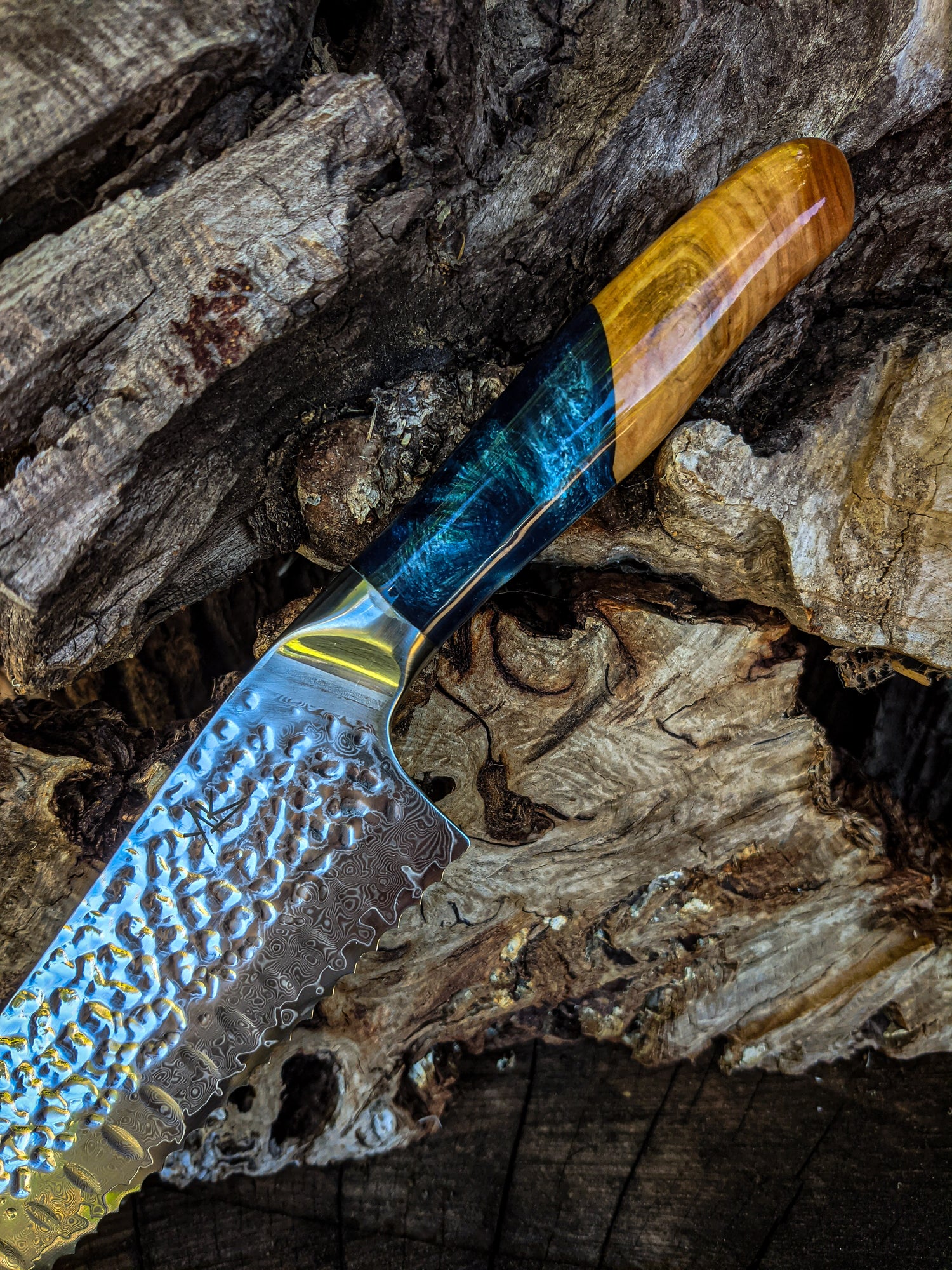
Designing the Blades
I don't make the blades myself, only the handles. The benefit of industrial processing is that you receive a consistently good product.
However, I am extremely fussy with what I want in each blade. I refuse to sell any knife I wouldn't want to use myself.
After the hardness and steel quality above, my next priority is food release. You'll notice that all the blades (except the boning knives), have hammer marks down the side, along with circular notches down the blade. These are to create an air gap between the food and the blade, helping it fall off easier.
Next is the bevel of the blade. I keep it at 15 degrees. You couldn't do this with a German steel because it would dull too quickly, but since my steel is very hard, it will hold up to it.
Lastly, the weight balance is extremely important to me. A front heavy or back heavy knife just doesn't feel right.
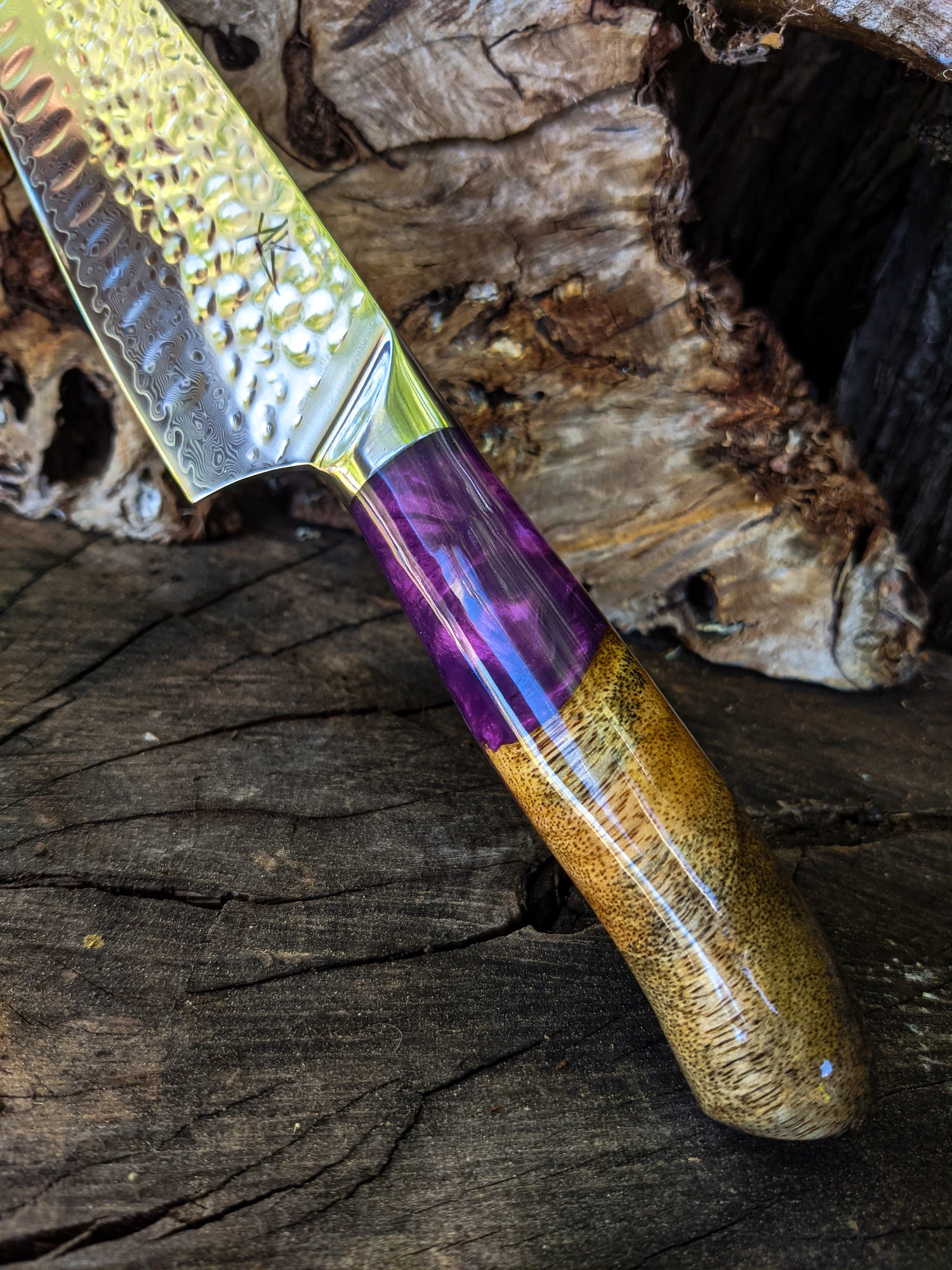
Designing the Handles
This is the part I love. Sanding down each handle is a unique experience with different wood and colour combinations.
I can do pretty much any shape on request, but I usually stick to the standard shape in all my pictures.
I design these to avoid calluses, blisters and sores, with smooth edges that won't rub. The handle shape cups the hand perfectly and fits well.
The finish I apply is waterproof, scratch resistant and very durable. It won't discolour or brown like oiled finished will, and doesn't need any maintenance.
A quick wash in warm soapy water will clean them up in seconds.

Which blade is best for me?
Are you a rocker or a chopper? People generally fall into one of two camps, or somewhere in between. Some people will keep the tip of the knife against the board and rock it back and forth, making them 'rockers'. Others, like me, will have an up and down motion - they are 'choppers'.
There are knives available for both styles of cutting which will help you streamline your cooking preparation. See below for information on all my blades and their functionality in a kitchen to help you find your perfect knife.

Standard Chef's Knife
Lets start with the king of all kitchen knives, the Medium Chef's knife. If you had to just buy one knife, this would be it.
It's a blade for the Rockers, who like to keep the tip of the knife against the board and rock it back and forth. At 200mm (8"), it's the perfect size for pretty much everything.
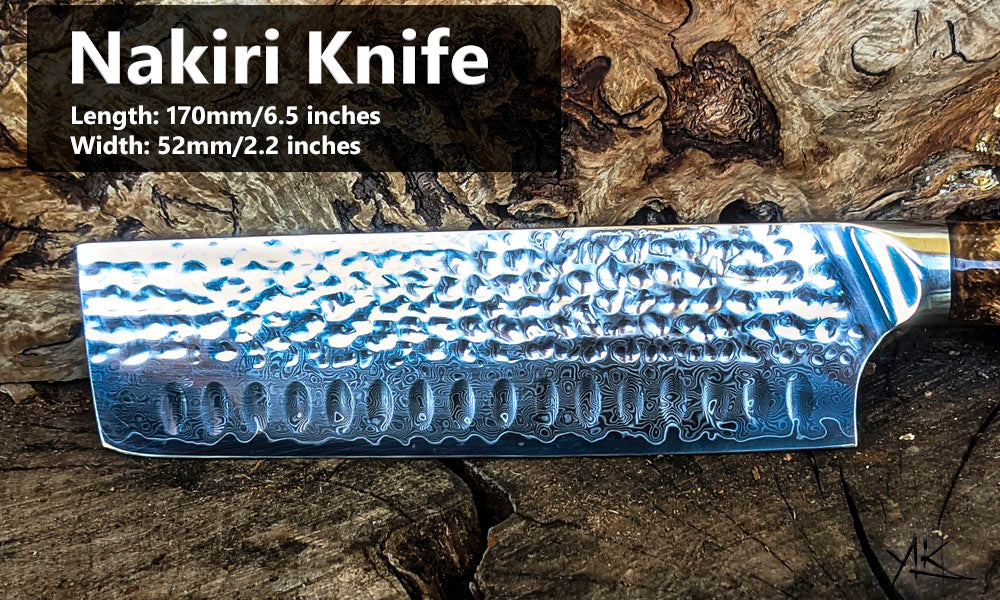
Nakiri Knife
With it's straight flat profile, it's perfect for the choppers, and does that job very well. These are an Asian style blade, for precise chopping and control.
At 170mm (6.5") long, it's one of the knives I grab first.

Santoku Knife
This is honestly my favourite knife in the kitchen. It's made for the choppers, and it works amazingly if this is your chopping style. A must have in my book!
At 195mm (7.6") long, I love this knife.
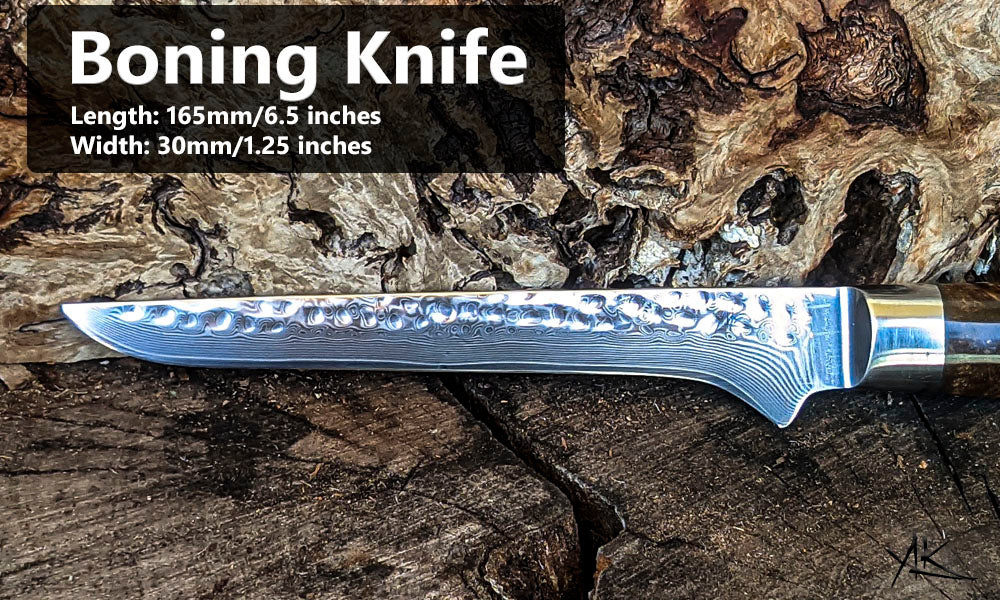
Boning Knife
As opposed to a filleting knife, this blade isn't flexible. It's designed to get into those joints of meat, curve it around the bone, and cut out a joint in no time.
It's a must have for anybody who likes to break down meat.
At 165mm (6.5"), it's the perfect side to get in those joints.
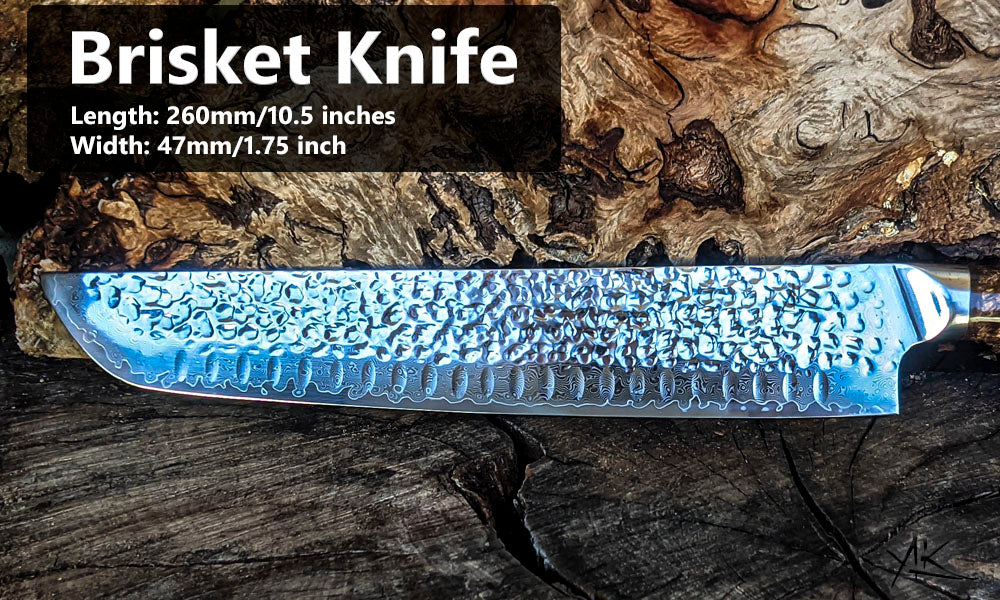
Brisket Knife
This one is a bit of a status symbol for some. You cook that perfect delicious chunk of brisket, then pull out your brisket knife and slice that bad boy up. And it's what this knife does better than any other - slicing.
At 260mm (10.5"), its the longest knife in our collection.

Bread Knife
You'll never guess the use of this knife. It cuts bread well.
While not a super versatile knife, the serrated edges break up the crumb better than a straight edge blade. It's a must have for those who love baking a nice sour dough at home. At 250mm (10"), they make quick work of the crustiest loaf.

Utility Knife
I like these knives for quick and easy jobs. Want to slice a lemon, you grab this little knife, a quick tomato slice, grab this knife. It's a very useful one to have.
At 125mm (5"), the Utility is perfect for those quick little jobs.
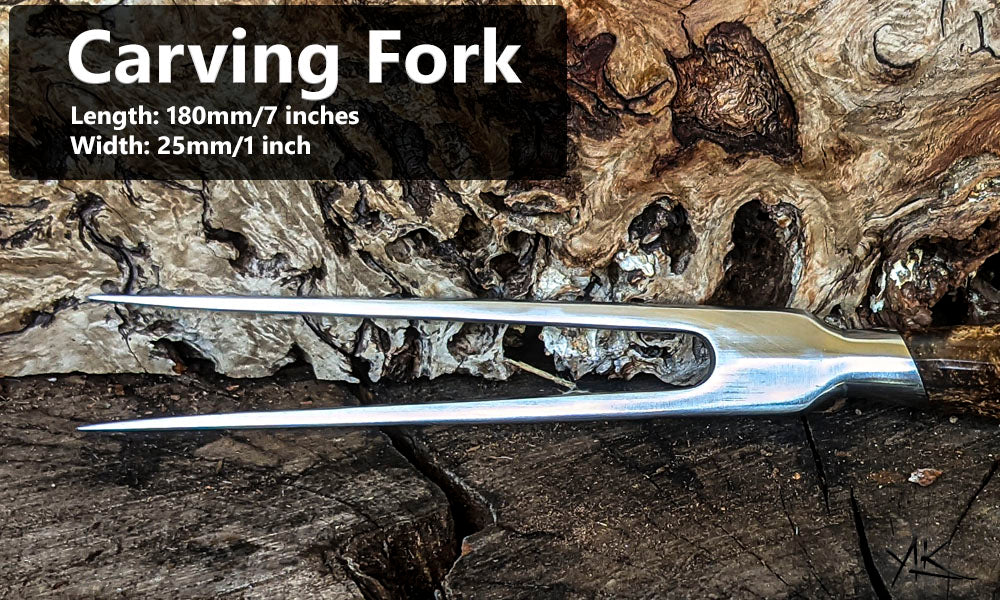
Carving Fork
Do you actually need a carving fork? No, not really.
Do you want to pull out that carving and brisket knife in a dinner party, stab your perfectly cooked roast and slice that bad boy up with the brisket? Yes, yes you do.
At 180mm (7.5"), it will fork.
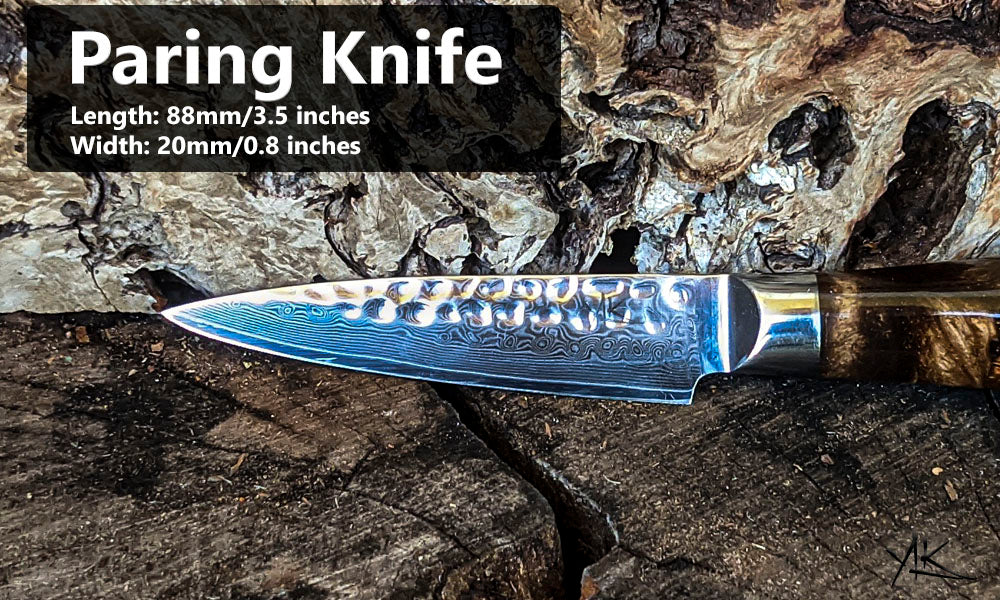
Paring Knife
This is the knife I probably use the most around the house.
I wake up in the morning, and make my breakfast. I need to chop a few strawberries, and this knife does the job. When I need to half some mushrooms, this comes out. Hell, when boxes need opening, this one I grab too.
At 88mm (3.5"), this is a must have!
Keeping them Sharp
All Knives need to be sharpened but the regularity depends on the use of the knife. You can keep your knives sharp at home by using either a Carbon Honing Rod or a Diamond Steel. But what's the difference?
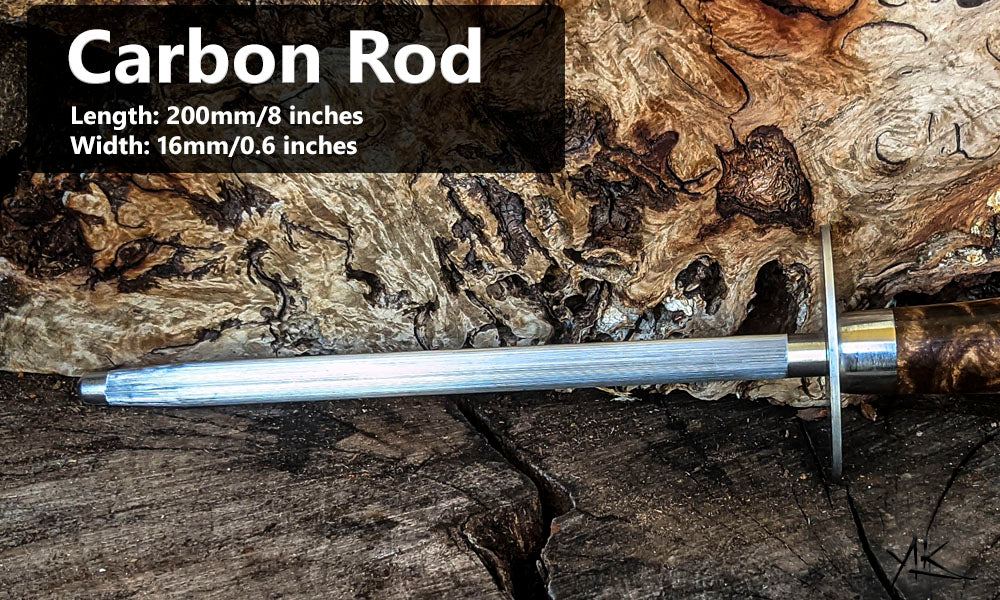
High Carbon Honing Rod
A Honing Rod is not used to sharpen but to restore a bent edge. During typical knife use, the micro bevel will bend to one side or another, making the blade feel blunt.
You should use this rod before every use of your knife to ensure the edge of your knife is straight and not curved, continuing to optimise the sharpness of the blade. Using a honing rod instead of a diamond steel will stop you removing steel from your blade as you sharpen, keeping it's original shape for longer.

Diamond Steel
A Diamond Steel will remove material from your knife. This will restore the V-shape of your blade edge to sharpen it. You would typically not use this method of sharpening frequently - only when your blade is feeling dull. If you use this method too often it will erode your blade very quickly. This is a great method for sharpening if you are a bit lazy or forgetful with knife maintenance (like me).
Caring for your Knives
DO NOT PUT THEM IN THE DISHWASHER.
If you take one thing, take that.
The high heat and steam in a dishwasher will cause the timber to expand and come away from the epoxy. The finish will yellow and peel off, and they'll just look like crap.
The caustic detergents will also cause micro pitting, which will encourage rusting.
Over time, the high heat will also mess with the blade temper, which will soften the steel and take away the edge retention.
A two second hand wash with some detergent is all they need.


